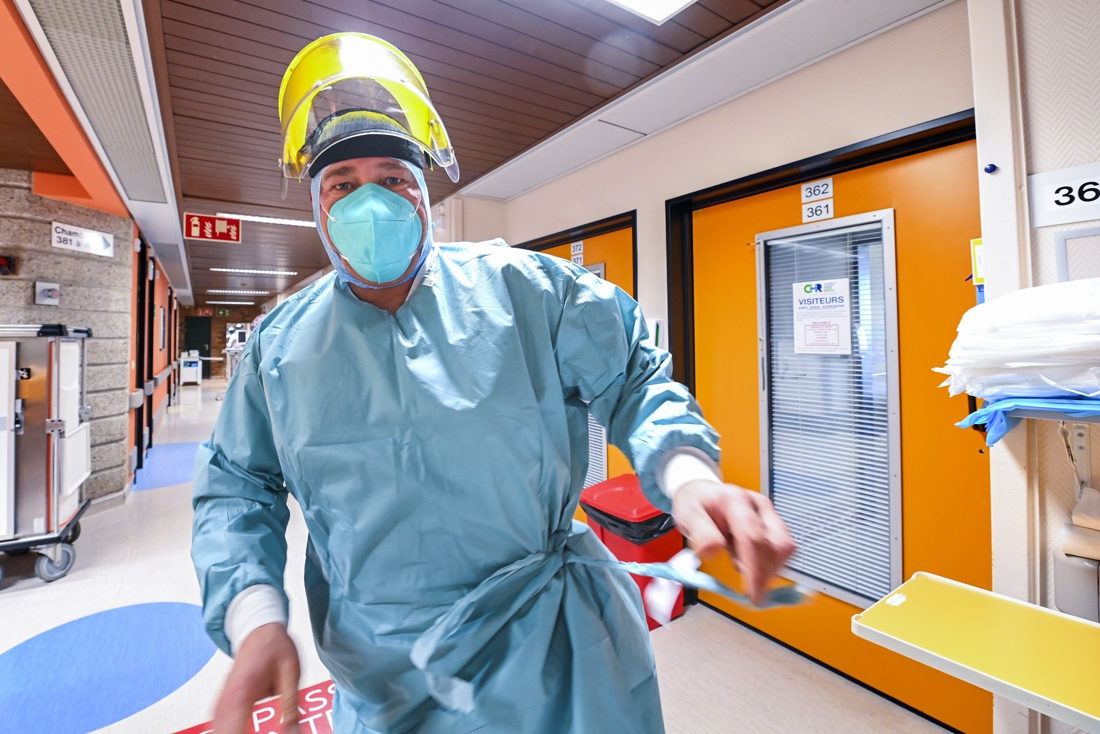The cold season has started – and with it the Cold season. This year the coronavirus will be added. What does that mean for Germans who love sports? What danger does sport pose for the sick? Find out here.
Exercise with mild symptoms
If you have a cold, that doesn’t mean giving up all sporting activities from now on. Some cold symptoms are usually harmless. A runny nose, for example, does not prevent you from jogging in the evening. An infection of the upper respiratory tract is also relatively harmless. It all depends on how you feel. If you are a recreational athlete, it still applies Approach training more slowly and if possible to forego it. Take care yourself warm enough to wear and not to cool down during the breaks. After training, you should get into warm and dry clothing as soon as possible.
Exercise for more severe symptoms
Should you experience more severe symptoms is refrain from sport. Such symptoms include, for example Fatigue, sore throat, tiredness and general malaise. The body tells you even more clearly in the case of one Febrile illnessthat you should refrain from exercising. This also applies if you have been able to reduce symptoms by taking medication or pain relievers. Because the disease is still in your body and by no means defeated. On the contrary: If you drive yourself to exercise despite being ill, you could Worsen disease.
What are the dangers of exercising with a cold?
The greatest danger for those who do sports during a cold is one Infection of the heart with bacteria from a secondary infection. Furthermore, there are two major stress factors that affect the body when you have a cold. First, the pathogens in the body and second, the physical exertion. Both together mean one great strain on your own immune system. This ensures the release of stress hormones, which in turn suppress the body’s immune responses. However, it needs these to fight viruses and bacteria in the body.
Another Problem: Sport stimulates the circulation. Usually a positive effect, but in the event of an illness – primarily bacterial infections – the bacteria can spread rapidly in the body and attack organs. This can either make an existing illness worse than it already was, or even more serious illnesses can arise.
What are the consequences of exercise for a cold?
The worst consequence of too much exercise during a cold or flu is that Inflammation of the heart muscle, also called myocarditis. If pathogens make their way to the heart as a result of a cold or flu, this can result in myocarditis. If the disease progresses, this results in permanent damage to the heart and can also be life-threatening. You can find detailed information on myocarditis in our article “Myocarditis – The Undetected Danger in the Heart”.
How long do I have to go without exercise if I have a cold or flu?
However, once you’ve gotten over the cold, wait and see before starting exercise again. A guideline: You should be free of medication and symptoms for at least two days. A grace period of seven days applies here after a fever. There has to be so much time for the body to recover. If in doubt, you should consult a doctor. It is normal to feel limp for a while after the flu – give yourself enough time to get well before you start exercising.
How do I start exercising again after an illness?
After the illness it is important that Slow to start training again and gradually ramping up the training plan. Start with a low load. Long walks, easy jogging and bike rides are suitable for re-entry. Nordic walking and hiking are also good endurance sports to get going again without pushing yourself to your limits.
Exercise after a corona infection
Especially in times of the Covid-19 pandemic For athletes, the question arises when they can start again after a coronavirus infection. It is particularly problematic that the coronavirus attacks organs that play an important role in competitive sports: especially the lungs and – in severe cases – the heart. The virus has not yet been fully researched and scientific findings are few and far between. A position paper of the Science Council of the German Society for Sports Medicine (DGSP) suggests that one symptom-free course of the corona illness two weeks break from sport to insert. This period may be longer depending on the severity of the disease. With a cough and fever it is two to four weeks, with pneumonia at least four. And if heart muscle disease occurs, the break must last for at least three months. This position paper makes no distinction between professional and amateur athletes. For both, however, it is only a first guide in the event of illness. Ultimately, you should have your fitness for sports certified by a doctor.
Exercise protects against colds
Scientists from the Appalachian State University North Carolina in the USA have researched the effects of sport on the immune system. To this end, they divided a group of 1,000 people between the ages of 18 and 85 into several groups. One part did an exercise program five or more days a week, the other did the same for just one day. The result: the “frequent movers” caught a cold half as often as the opposing group. According to this study were Endurance sports such as jogging, cycling and swimming are particularly effective. But be careful: This effect only occurs if the test subjects do not work too hard.
Cover picture: © Photodjo / iStock.com
–

/data/photo/2020/10/22/5f91a5a1ed931.jpg)
